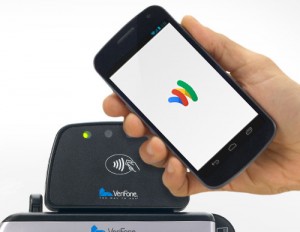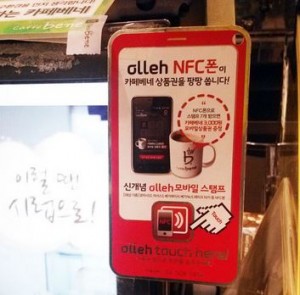 We already use credit cards and checks which reduce the need for actual cash, coins and banknotes our daily lives, now thanks to mobile phone applications young people are using even less! Most cell phone companies now offer mobile payment facilities. According to Adrian Kamellard, chief executive of the Payments Council. “The 2000s were the decade of the debit card, the 2010s are likely to be the decade of the mobile phone.”
We already use credit cards and checks which reduce the need for actual cash, coins and banknotes our daily lives, now thanks to mobile phone applications young people are using even less! Most cell phone companies now offer mobile payment facilities. According to Adrian Kamellard, chief executive of the Payments Council. “The 2000s were the decade of the debit card, the 2010s are likely to be the decade of the mobile phone.”
There are many competing payment providers and systems for mobile phones; from established banks like Pingit from Barclays, from Internet payment experts like Paypal, and from Internet giants like Google’s Wallet. Depending on the country and the banking practices that exist, different functions of mobile phones are solicited. Some of these systems depend on encryption techniques and SMS verification, particularly with online payments. This type of payment is particularly popular in the developing world. In places where the ‘chip and pin’ is less common, like the United States, payment cards with a magnetic band can read by a mobile phone accessory like the solution from Square which then asks for a signature on the tactile screen to authenticate the transfer. Others exploit the growing potential of mobile phones to react with the environment in the form of Near Field Communication (NFC), a wireless or contactless association of the phone with a terminal. NFC chips, once restricted to cards are now being incorporated into up market mobile devices notably on Android and Nokia phones. Also these chips can be integrated into the processor on credit cards or debit cards. Supporters of NFC argue that NFC payment technology is faster, easier and more secure than traditional systems. Moreover, most people also find this way of payment very convenient and it is being increasingly adopted by transport authorities for access to mass transportaion systems. However, some remain skeptical and point out that it possible to hack into phones through the NFC chip.
Despite these misgivings NFC is predicted to grow significantly in the near future. 167 million NFC-enabled handsets will ship in 2013. In 2017, there will be 1.67 billion NFC-enabled handsets in use around the world. By 2017, almost 20% of worldwide mobile payments will be transacted using NFC technology. NFC payments will surpass USD 391 billion in volume in 2017. Increasingly, people say they cannot live without their mobile phones. NFC mobile proximity payment can offer consumers increased convenience, and personalized assistance with their shopping and payment needs. A wide range of additional applications can also be enabled using NFC technology, for example, providing savings from instant/specialized offers tailored to shopping patterns or tied to consumer location, or supporting additional value-added functions. Undoubtedly, Near Field Communication system has many benefits to customers. NFC contactless transactions are reliable, with certified terminals providing greater first time read reliability than standard magnetic strip readers. Security level is high, payment credentials are stored securely in the NFC-enabled mobile device’s secure element, protecting the credentials from skimming and account compromise. Mobile wallets provide consumers with the ability to use a single device to support multiple payment brands depending on the type of payment required, be it for a loaf of bread, a ticket, a book, fuel or a hotel bill.
As mobile commerce grows so does every component of the retail industry. Financial apps—including mobile banking, Point of Sale, m-commerce, and payment apps—will provide consumers, merchants, and small businesses with the ability to run their financial lives entirely from a smartphone. The mobile phone has become our social organiser it will soon be our complete money manager. Solutions for accepting payments using a mobile phone have been introduced over the past several years but have not gained the traction or attention that they are receiving today. Now however accepting payments using a mobile phone is becoming more common. Many mobile payment approaches are being discussed, evaluated and tested, including integrated NFC, non-integrated contactless, bar codes, cloud-based solutions, and text messaging. As approaches evolve, some are likely to become obsolete, while others may be merged. A comparison shows that bridge technologies, text-messaging, and bar codes solve certain device availability problems, but at the expense of reliability, security, and wallet and value-added functionality. NFC approaches emerge as the top choice, despite the challenges of acceptance and device availability, because they are reliable, secure, and easy to use.
A survey was conducted by Kelton Research on behalf of MasterCard evaluated consumer interest in smart phones that work as mobile wallet. According to the study, 62% of mobile phone were ready to make purchases by using their mobile phones.
The research also showed that, young people are more curious about mobile payments than other sections of the population. Moreover, the results showed that men are more likely than women to adopt mobile payment. According to the survey, 63% of people in between the ages of 18-34 want to pay with mobile phones. This proportion falls to 37% for over 35 years. 65% of people in between the ages of 18-34 feel naked when they go out without their mobile phones instead of without clothes. For the people who are over 35 years old, this rate was 34 percent.
Mobile wallet users’ preferences vary according to gender. Men use their mobile phones for their functional requirements. On the other hand, women use their phones as more personal mobile devices. According to the survey, men are more willing to make purchases with their mobile phones than women (51% men, 40% women). And, the level of response changes people to people. Namely, people are impressed by a person who is using with a mobile application instead of a credit card account (men 49%, women 45%).
As stated before there is a huge potential in the mobile payments according to numbers. There are more than 5 billion people in the World that use mobile phone and there are 1.5 billion people who have a payment card. These numbers also prove the potential of mobile payments and how big it is. The trends, demands and expectations of consumers show that the future means of purchasing is mobile payment.
For more information see :
- http://www.zdnet.com/smartphone-payments-via-nfc-dont-ditch-your-wallet-just-yet-7000011846/
- http://www.hongkiat.com/blog/digital-wallets/
- http://www.emrahka.com/
- http://blog.euromonitor.com/2013/03/visa-and-mastercard-each-debut-new-mobile-payments-programmes.html
- http://mobithinking.com/mobile-marketing-tools/latest-mobile-stats/f#nfc

Une réponse à “Mobile Payment and Mobile Wallet are the real future of shopping”
I think this is a great technological development. I wouldn’t have thought that it was possible ! But I’m a little old school and I don’t think this is a good thing. Actually, I’m against all those forms of paperless payments. I think they are made to push the user to buy more because he doesn’t really feel like spending money. Users only realizes at the end of the month, when they receive their bank statement.
Of course, nowadays you can check your bank account every day on the internet but few people are conscientious enough to do that. And I think that, on the phone, payments will be even more trivialized and that’s not a good thing for the average consumer.